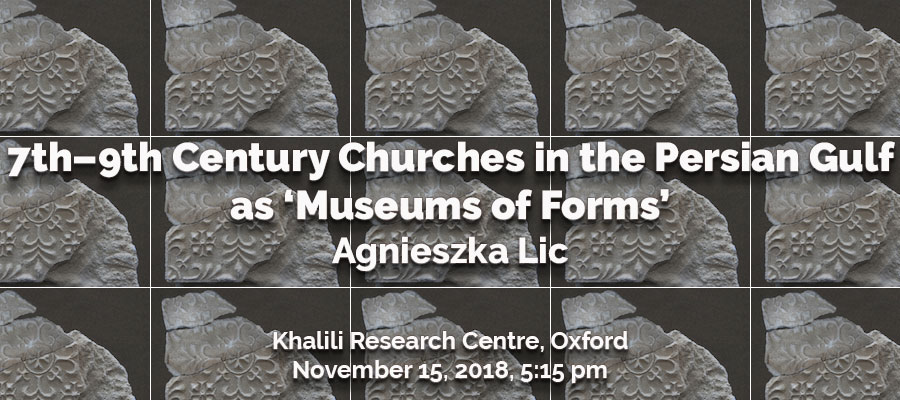7th–9th Century Churches in the Persian Gulf as ‘Museums of Forms,’ lecture by Agnieszka Lic, Khalili Research Centre, Oxford, November 15, 2018, 5:15 pm
Discussing the importance of stucco decorations in Islamic art Oleg Grabar wrote: ‘There was almost no end to the ways in which it could be used and transformed (…). Thus throughout almost the entire history of Islamic art monuments with stucco decoration appear as museums of forms’ Although he was referring to Islamic art exclusively, it is striking how successfully it describes also Christian stuccoes of the Persian Gulf and how accurate the phrase ‘museum of forms’ reflects the character of Christian art of the region. Why is it so? What does the boom in Christian stucco production of the 7th-9th centuries tell us about the development of Christianity in the Persian Gulf? What happened to the experimental and creative approach of the Gulf stuccoists after the 9th century?
Agnieszka Lic is an archaeologist and art historian interested in art of Mesopotamia, Iran, and the Arabian Peninsula in the early Islamic period. She specialized in architectural decoration, especially stucco.
